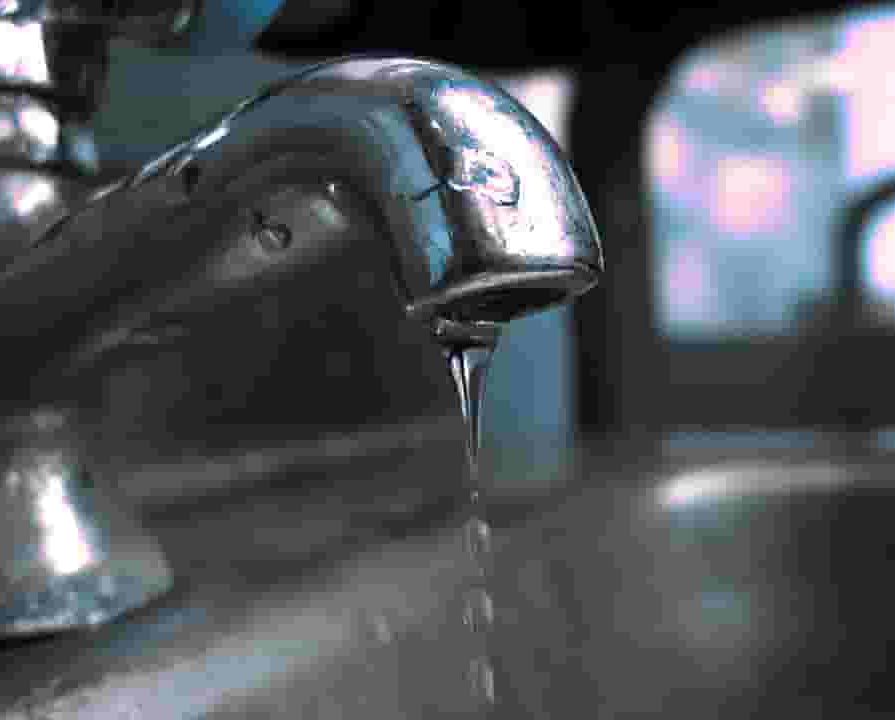
The notorious drip-drip from a leaky faucet may be annoying, but just how serious of a plumbing issue is it? Should you call in a professional to take a look, or try to tackle the issue yourself? And what about similar problems like water leaking out of a faucet handle – are those problems more worrisome?
To help answer questions like these, we’re going over exactly what a leaky faucet can be dangerous, and what specific problems it can lead to. Let’s take a closer look at one of the most frequent plumbing issues!
What causes a leaky faucet?
Leaky faucets are a common household plumbing issue and have several potential causes:
- Corrosion and Rust: If internal steel plumbing components have started to rust, that can build up and damage valves as well as create other problems, leading to a dripping faucet.
- Seal Problems: The O ring is a seal at the base of the faucet that helps prevent leaks from forming. If an O ring breaks or wears out, you will start seeing leaks around faucet handles. Inlet and outlet seals can also lose functionality over time, causing similar issues.
- Washer or Valve Problems: The washer and valve in the faucet play key roles in keeping water flow turned off. These parts can experience a lot of stress, and if they wear out, water will start dripping.
Are leaky faucets a problem?
Is it a normal part of an older home or part of a larger concern? Here are five reasons to take a closer look at it:
1. Rust Buildup
We mentioned above that one cause of leaking faucets is a build-up of rust inside. This is actually a bigger problem than it may seem because rust is an ongoing corrosion process – it gets worse over time.
If enough rust has built up to affect how a faucet works, that’s a sign that vulnerable metal has been exposed to moisture for a significant period of time. Once protective coatings have been breached, rust can spread with surprising speed: Steel pipes and valves may continue to decay. They may even develop cracks or fail entirely, creating a serious leak problem.
While the telltale drip of the faucet may not seem that damaging, it may be hiding a far worse plumbing problem where you can’t see it.
2. Stains in the Sink
“Hard” water contains high amounts of trace elements like dissolved calcium and iron that the water may have picked up on its journey to your home. Ordinarily, hard water doesn’t create many significant issues unless it is heated, in which case minerals can precipitate out and create scale problems; however, a leaky faucet exposes your sink to a constant drip of water, and that can add up to a lot of exposure to those trace elements over time.
We see this primarily with reddish-orange stains on light-colored sinks, which are essentially rust stains caused when the dissolved iron in the water is exposed to air over time (and may be much worse if your plumbing is rusting on the inside). These rust stains can be difficult to remove and it’s better to avoid them altogether by getting a dripping faucet fixed ASAP.
3. Countertop and Wall Damage
The presence of moisture can cause other difficulties over time, especially if the leaky faucet is a sign of deeper leaks within your fixtures. For example, if your bathroom faucet is leaking from the handle, even a small leak is spreading moisture into nearby materials. That can cause cabinet wood to warp and damage drywall permanently. It can also wear away at the grout between tiles and cause them to be loosened.
A sink handle leaking or other serious problem may also mean that there leaks behind the walls, which can lead to serious cases of rot and structural damage. It’s important to do thorough checks to make sure these problems aren’t growing behind the scenes.
4. Potential Mold or Mildew Issues
A leaky faucet handle or other signs that water may be continuously leaking around the back of the sink also means a mold or mildew problem could be developing. Mold likes moist and dark places, so even small leaks that allow moisture into wood, drywall, or insulation can be a perfect habitat for mold spores.
Mold is a particularly serious problem in any building: Mold spreads, digs into porous materials and is notoriously difficult to remove. Some types of mold are bad for human health. Mold remediation projects are time-consuming, very expensive and rarely covered by insurance companies – the best way to deal with mold is to make sure it never starts growing in the first place, which is why it’s important to address a faucet dripping water.
5. Wasting Water Over Time
It may not seem like a sink faucet leaking wastes a lot of water, but when a faucet starts dripping, it drips all the time – that can add up faster than you might expect! If a faucet drips around once every second, that’s enough to waste 3,000 gallons of water in a year. Getting that faucet fixed will help conserve water and benefit the environment.
Several of the other issues are also connected with these potential hidden leaks, making a leaky handle a good reason to arrange for an expert to take a look.

